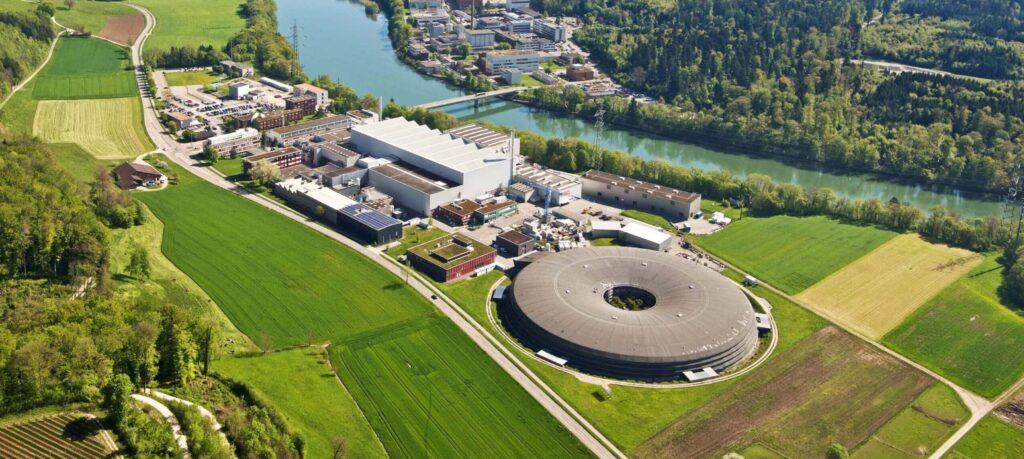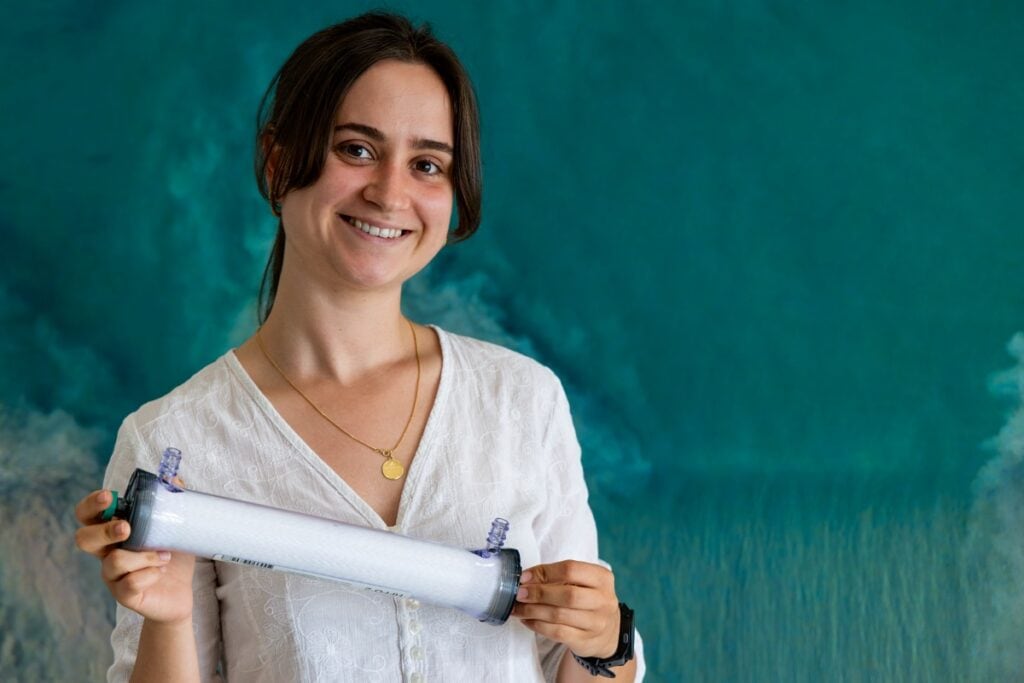Ph.D. student Zsófia Edit Szathmáry was granted a unique opportunity

High dedication and a will to study high-risk, high-gain projects to solve problems that others may claim to be impossible led to our Ph.D. student Zsófia being offered a rare opportunity. She was granted access to test her Ph.D. project samples at the prominent multidisciplinary research institute Paul Scherrer Institute of Switzerland.
Zsófia Edit Szathmáry is conducting her industrial Ph.D. project at Aquaporin, where she focuses on studying how Aquaporin Inside® membranes work at a nanoscale – which means studying objects that are not even visible through regular microscopes.
The Aquaporin Inside® technology is constantly being refined. As part of that, Zsófia studies how the aquaporin proteins act in the membrane environment through various analytical methods such as neutron scattering.
The aim is to contribute to developing a new generation of Aquaporin Inside® membranes with improved performance, making water filtration more affordable, faster, easier, and of higher quality both at the industrial and individual consumer levels.
Access to the best and most prominent test facilities
To obtain the most accurate samples from Zsófia's study, she applied for access to the unique neutron scattering facility at the Paul Scherrer Institute of Switzerland (PSI). PSI is Switzerland's largest research institute for natural and engineering sciences, a place with very limited access where cutting-edge research is conducted daily.

Zsófia shares how unique it is to be granted access to the facilities:
"The equipment available at PSI is not available in Denmark and is quite outstanding worldwide. It can offer insights into studying Aquaporin’s vesicle system with integrated aquaporin proteins, which is the foundation of the Aquaporin Inside® technology and, therefore, essential knowledge for developing a new generation of Aquaporin membranes.”
How tests are conducted
Scattering techniques utilize sub-nanosized particles such as neutrons or electrons, which are fine-tuned to a set of parameters. This fine-tuning process often requires a lot of space. Imagine a giant room in the shape of a stadium, where particles are projected onto the walls, running around the sides of the oval space to obtain the right speed and properties. The interaction of such waves or particles with a sample gives a scattering profile from which you can derive information on sample content, including various sample properties and parameters.

When asked if the stay at the research facility opens doors to exciting new things, she says:
"Definitely! Firstly, I had the opportunity to meet like-minded scientists who work on different projects but use the same methods as I do. Secondly, I learned about the exciting equipment and machinery available at the research institute. This gives me a great starting point for further discussions on what technologies we could benefit from studying our system. I certainly hope to have the opportunity to return to the Swiss institute."
About Zsófia Edit Szathmáry
Zsófia was born and raised in Hungary but came to Denmark to begin her studies nine years ago. She holds a Bachelor's degree in Biological Sciences in Sustainable Biotechnology and studied further to become a bioengineer. Throughout her studies, she has always sought out industrial collaboration opportunities, which is why the Ph.D. project at Aquaporin was a perfect fit.
Professionally, she seeks challenges and has always worked on high-risk, high-gain projects as they give her a particular boost when it comes to solving problems that others may claim to be impossible.
It is also vital for her to work on a project that serves a bigger purpose, such as solving the problem of wastewater recirculation and, generally speaking, the global crisis of water scarcity.




